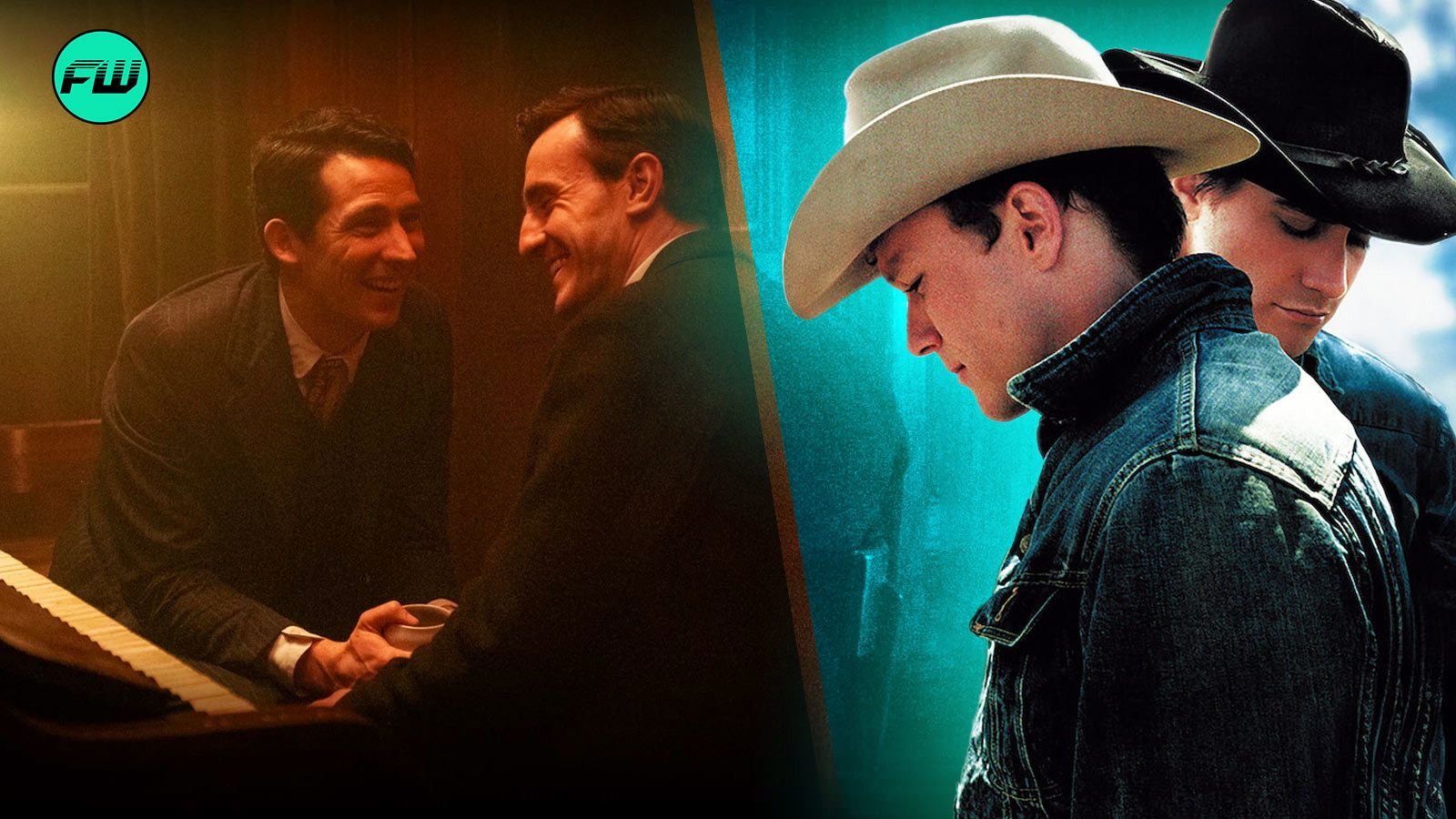Dion Beebe's Cinematographer's Protocol - FilmInk
by James Mottram
The Cannes Film Festival is always a time for celebrating films and filmmakers. Since 2013, that has extended to the work of esteemed cinematographers, thanks to the annual Pierre Angénieux Homage. This year, it was the turn of Australian-born Dion Beebe, a director of photography whose credits include films for such revered directors as Jane Campion (Holy Smoke!, In the Cut), Michael Mann (Collateral, Miami Vice) and Ang Lee (Gemini Man).
FilmInk meets him at a beachside bar in Cannes two days before the plush ceremony sponsored by Angénieux, the French zoom lens manufacturer that itself is celebrating 90 years in the business. “It’s a little bit of a full circle, because the last time I was in Cannes was actually for my very first film,” reveals Beebe. The movie was Alison Maclean’s 1992 movie Crush, starring Marcia Gay Harden, which competed in Cannes that year alongside films by Robert Altman, David Lynch, Hal Hartley and Terence Davies.

“I was literally fresh out of film school,” says Beebe, who studied cinematography at the Australia Film, Television and Radio School between 1987 and 1989. “I didn’t really fully understand what the Cannes Film Festival was, so I really came last minute, and it was this crazy, remarkable experience of the red carpet and chaos of paparazzi.” The next few years saw him build kudos in the industry, before Campion selected him to shoot 1999’s Holy Smoke!, with Kate Winslet and Harvey Keitel, and his career took off.
So how does he feel now, collecting the Pierre Angénieux award? “There’s something about being recognised for your work, and there’s something that’s quite validating about that. I don’t tend to look back on my work too much. You finish a project and then you’re really focusing on what to do next…[but] I’ve come to realise that all these projects really are these markers on the path of your career. And so, this has forced me to look back on those movies and remember the amazing people that I got to work with.”
Among them, Michael Mann – whose 2004 thriller Collateral, starring Tom Cruise, became the first mainstream studio movie to use digital photography. “Cruise was, I think, like all of us, maybe a little apprehensive. It was quite experimental, and the studios were a little freaked out.” Although the equipment was cumbersome at the time, Beebe admits: “It was a revelatory moment to see the night sky captured on this digital format for the first time. Seeing L.A. at night, with glow of the city and the silhouetted palm trees, for me it was… ‘OK, I get it’.”

Now, two decades on, the evolution of digital photography technology has been nothing short of remarkable. “Literally on my iPhone, I can get better night photography than we did on Collateral. The progress is staggering. It’s changed so much. Not just the look of movies. How we make movies, it’s a different discipline on the set when you’re shooting digital or shooting film. Now, we can shoot endlessly. It’s really introduced so much change, not just for the cinematographer, but for the directors, for actors. It’s a huge shift.”
Collateral was not the only time that Beebe collaborated with Cruise, with the cinematographer also working on Doug Liman’s sci-fi Edge of Tomorrow. “You do have to have your shit together when you’re working with Tom. He’s a filmmaker. He understands every aspect. He’s been doing it longer than any of us and at such a high level, and so he does know a hell of a lot.” One word of advice, though. “If you are doing a movie with Tom, and you are a cinematographer, and he comes to you and says, ‘How long do you think this setup is going to take?’…if you give him a number, stick to that number.”
While Beebe has made plenty of intense dramas, his work also includes a lighter side, thanks to six films with Rob Marshall, including 2002’s Chicago, which saw him Oscar nominated. “I’ve really made very conscious choices about the movies I do and not get caught in one specific genre. For me, a movie I do and the movie I follow up with… normally I try and put some contrast in style of genre between them… that has always been important.”
Beebe’s next film is another music-oriented movie, the highly-anticipated Michael – a biopic of the King of Pop, Michael Jackson. “Someone like Michael, such a controversial life. Someone who was a star from the age of six-years-old and just was in the spotlight his whole life. It’s amazing subject matter and it’s just the most incredible catalogue. To be working with Michael’s music, you have to pinch yourself. When you hear the opening of ‘Beat It’ or ‘Thriller’… it’s quite an incredible privilege.”
Playing the singer is Jaafar Jackson, the son of fellow Jackson 5 member Jermaine. “This kid, it’s like he was born to play Michael. He literally grew up watching Michael perform. He was performing like Michael as a kid, like a lot of kids were, back in the height of Michael’s career. Everyone wanted to dance like Michael and the amazing thing is, Jaafar actually can dance like Michael, and he has Michael’s physicality, and he really has a lot of Michael’s looks. He is definitely one of the reasons we’re able to make this.”
It also marks Beebe’s first feature collaboration with director Antoine Fuqua. “Antoine’s done music videos. He’s come from that world. But this is a different approach. Because what we’re trying to do is lift the veil a little bit on Michael as a person. So many people know his music, love his music, and we, of course, are very music-heavy in the movie, as you would imagine. But the challenge is to try and discover Michael off the stage. On the stage, his dynamic is incredible. But when he’s off the stage, trying to get a sense of who he is, that is the big challenge for Antoine… and also a big responsibility.”
It’s not Beebe’s first biopic, of course. He also shot 2019’s I Am Woman, the story of singer Helen Reddy, directed by Beebe’s wife Unjoo Moon. Working with a loved one, you still need to stay professional, he says, which means don’t criticise, despite the familiarity you might have. “I think it’s important to just bring that professionalism, even to those relationships and those situations, because you’re never just two of you. You’re working with, sometimes, 20, 30, 50 people, and you need to have a sense of protocol.”
With all his experience over the past three decades, if Beebe has one regret, it’s that he never got to work with one of his Australian filmmaking heroes. “Peter Weir was such an icon of mine for so many years and we did get close… we ended up having a conversation about a project that, unfortunately, never got made. He’s such an influence. Picnic at Hanging Rock still haunts me. So much of his work. The types of movies he was doing, both quite commercial, more obscure… he really trod that line, doing beautiful narratives that were incredibly appealing and would be successful movies.” The same could be said for Dion Beebe.
You may also like...
Diddy's Legal Troubles & Racketeering Trial

Music mogul Sean 'Diddy' Combs was acquitted of sex trafficking and racketeering charges but convicted on transportation...
Thomas Partey Faces Rape & Sexual Assault Charges

Former Arsenal midfielder Thomas Partey has been formally charged with multiple counts of rape and sexual assault by UK ...
Nigeria Universities Changes Admission Policies

JAMB has clarified its admission policies, rectifying a student's status, reiterating the necessity of its Central Admis...
Ghana's Economic Reforms & Gold Sector Initiatives

Ghana is undertaking a comprehensive economic overhaul with President John Dramani Mahama's 24-Hour Economy and Accelera...
WAFCON 2024 African Women's Football Tournament

The 2024 Women's Africa Cup of Nations opened with thrilling matches, seeing Nigeria's Super Falcons secure a dominant 3...
Emergence & Dynamics of Nigeria's ADC Coalition

A new opposition coalition, led by the African Democratic Congress (ADC), is emerging to challenge President Bola Ahmed ...
Demise of Olubadan of Ibadanland
Oba Owolabi Olakulehin, the 43rd Olubadan of Ibadanland, has died at 90, concluding a life of distinguished service in t...
Death of Nigerian Goalkeeping Legend Peter Rufai

Nigerian football mourns the death of legendary Super Eagles goalkeeper Peter Rufai, who passed away at 61. Known as 'Do...




